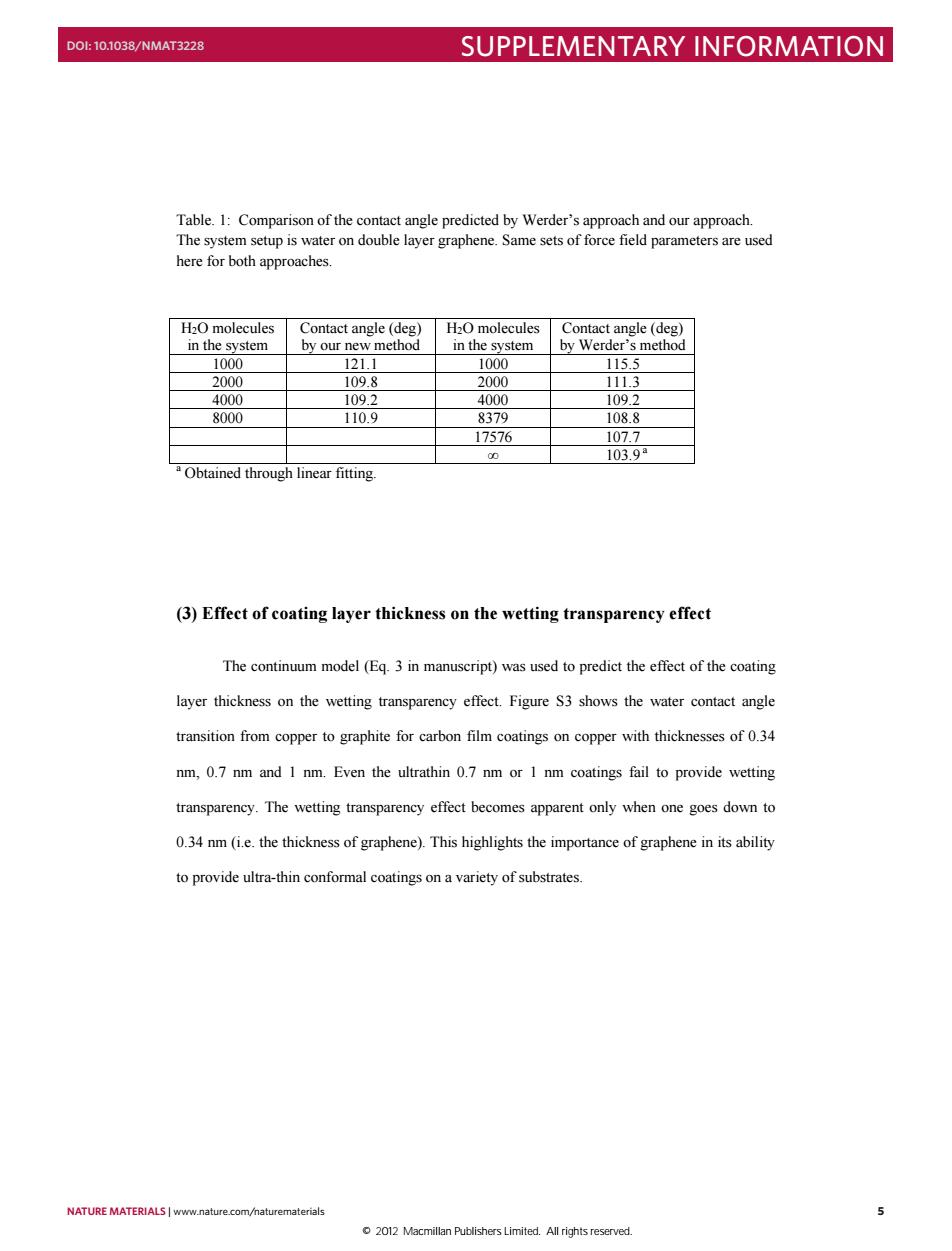正在加载图片...

DOE:10.1038/NMAT3228 SUPPLEMENTARY INFORMATION Table.1:Comparison of the contact angle predicted by Werder's approach and our approach. The system setup is water on double layer graphene.Same sets of force field parameters are used here for both approaches. H2O molecules Contact angle (deg) H2O molecules Contact angle (deg) in the system by our new method in the system by Werder's method 1000 121.1 1000 115.5 2000 109.8 2000 111.3 4000 109.2 4000 109.2 8000 110.9 8379 108.8 17576 107.7 00 103.9a Obtained through linear fitting. (3)Effect of coating layer thickness on the wetting transparency effect The continuum model(Eq.3 in manuscript)was used to predict the effect of the coating layer thickness on the wetting transparency effect.Figure S3 shows the water contact angle transition from copper to graphite for carbon film coatings on copper with thicknesses of 0.34 nm,0.7 nm and I nm.Even the ultrathin 0.7 nm or 1 nm coatings fail to provide wetting transparency.The wetting transparency effect becomes apparent only when one goes down to 0.34 nm(ie.the thickness of graphene).This highlights the importance of graphene in its ability to provide ultra-thin conformal coatings on a variety of substrates. NATURE MATERIALS www.nature.com/naturematerials 2012 Macmillan Publishers Limited.All rights reserved.Table. 1: Comparison of the contact angle predicted by Werder’s approach and our approach. The system setup is water on double layer graphene. Same sets of force field parameters are used here for both approaches. H2O molecules in the system Contact angle (deg) by our new method H2O molecules in the system Contact angle (deg) by Werder’s method 1000 121.1 1000 115.5 2000 109.8 2000 111.3 4000 109.2 4000 109.2 8000 110.9 8379 108.8 17576 107.7 ∞ 103.9 a a Obtained through linear fitting. (3) Effect of coating layer thickness on the wetting transparency effect The continuum model (Eq. 3 in manuscript) was used to predict the effect of the coating layer thickness on the wetting transparency effect. Figure S3 shows the water contact angle transition from copper to graphite for carbon film coatings on copper with thicknesses of 0.34 nm, 0.7 nm and 1 nm. Even the ultrathin 0.7 nm or 1 nm coatings fail to provide wetting transparency. The wetting transparency effect becomes apparent only when one goes down to 0.34 nm (i.e. the thickness of graphene). This highlights the importance of graphene in its ability to provide ultra-thin conformal coatings on a variety of substrates. NATURE MATERIALS | www.nature.com/naturematerials 5 DOI: 10.1038/NMAT3228 SUPPLEMENTARY INFORMATION © 2012 Macmillan Publishers Limited. All rights reserved